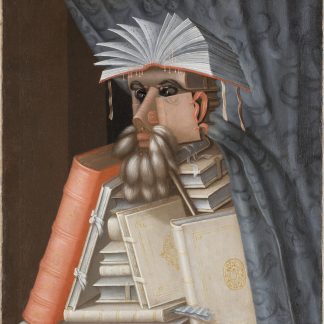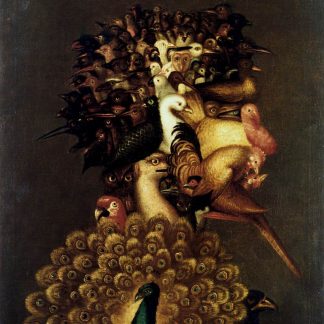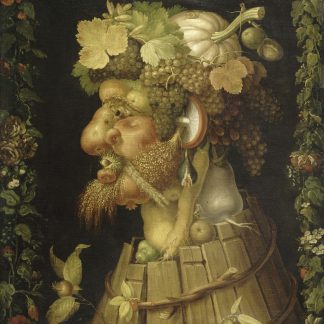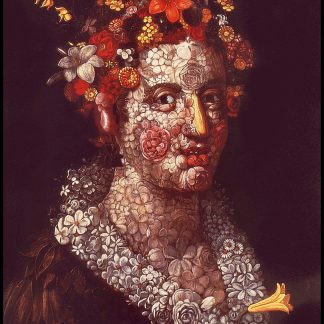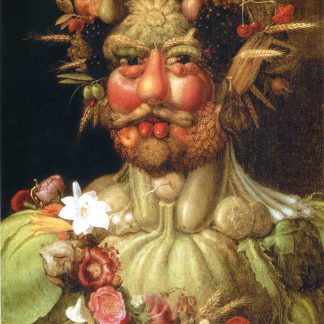Giuseppe Arcimboldo (1527-1593) was an Italian painter who is best known for his innovative and playful portraits made up of fruits, vegetables, flowers, and other objects. He was born in Milan and trained as a painter in the workshop of his father, who was also an artist. Arcimboldo began his career as a court painter for the Habsburgs in Vienna, where he painted portraits and religious scenes. He later returned to Milan, where he became a court painter for the Medici family.
Arcimboldo’s most famous works are his “composite portraits,” which he began to create in the 1560s. These portraits were made up of objects that were carefully arranged to create the illusion of a human face. For example, a portrait of Emperor Maximilian II was made up of fruits and vegetables arranged to look like his features. Arcimboldo’s composite portraits were highly original and playful, and they were popular with the aristocracy of his time.
Arcimboldo’s work has been influential in the development of surrealism and other modern art movements. His use of objects to create composite portraits was a precursor to the surrealist technique of “automatic drawing,” in which artists allow the subconscious to dictate the direction of their work. His playful and imaginative approach to art has also inspired many artists working in a variety of media, from painting to sculpture and beyond. Today, his work is celebrated for its originality and its contribution to the development of modern art.
Showing all 6 results
-

The Librarian
Arcimboldo, Giuseppe From $28.69 Select options This product has multiple variants. The options may be chosen on the product page -

Air
Arcimboldo, Giuseppe From $28.69 Select options This product has multiple variants. The options may be chosen on the product page -

Autumn
Arcimboldo, Giuseppe From $28.69 Select options This product has multiple variants. The options may be chosen on the product page -

Flora
Arcimboldo, Giuseppe From $28.69 Select options This product has multiple variants. The options may be chosen on the product page -

Summer
Arcimboldo, Giuseppe From $28.69 Select options This product has multiple variants. The options may be chosen on the product page -

Vertumnus (Emperor Rudolph II)
Arcimboldo, Giuseppe From $28.69 Select options This product has multiple variants. The options may be chosen on the product page
Showing all 6 results

